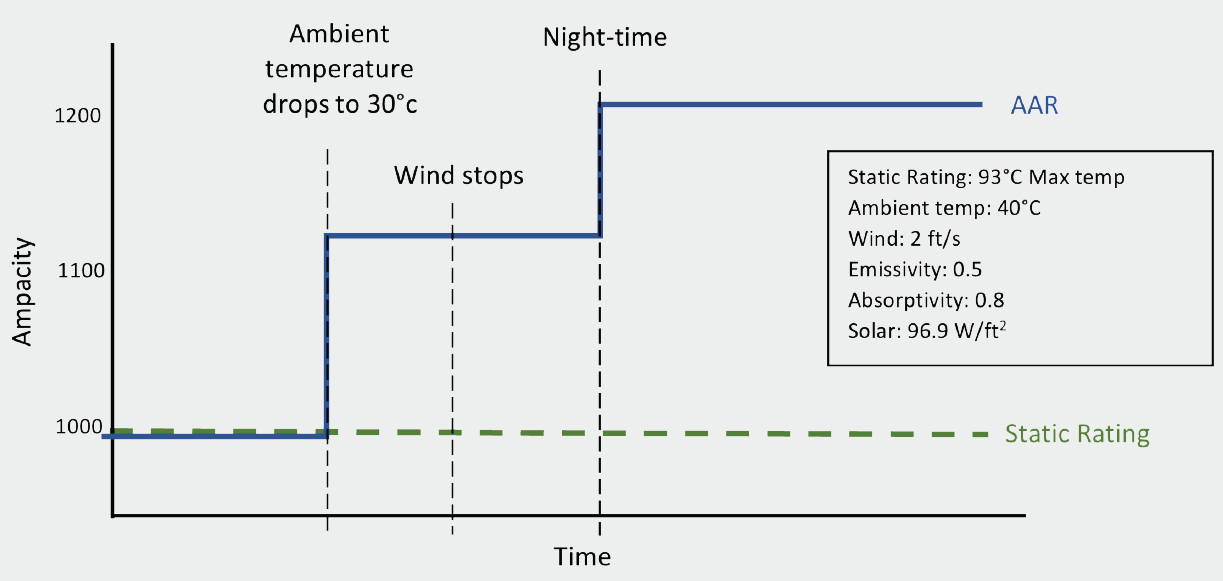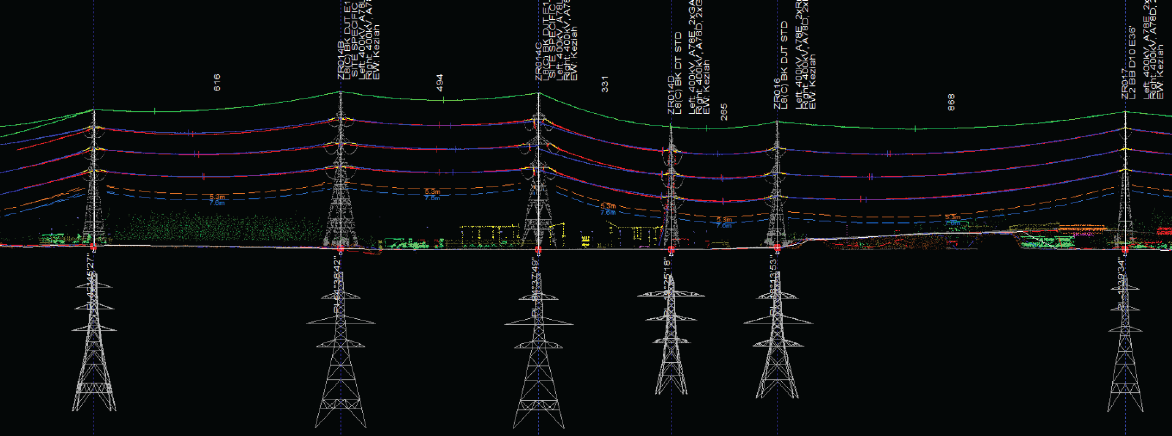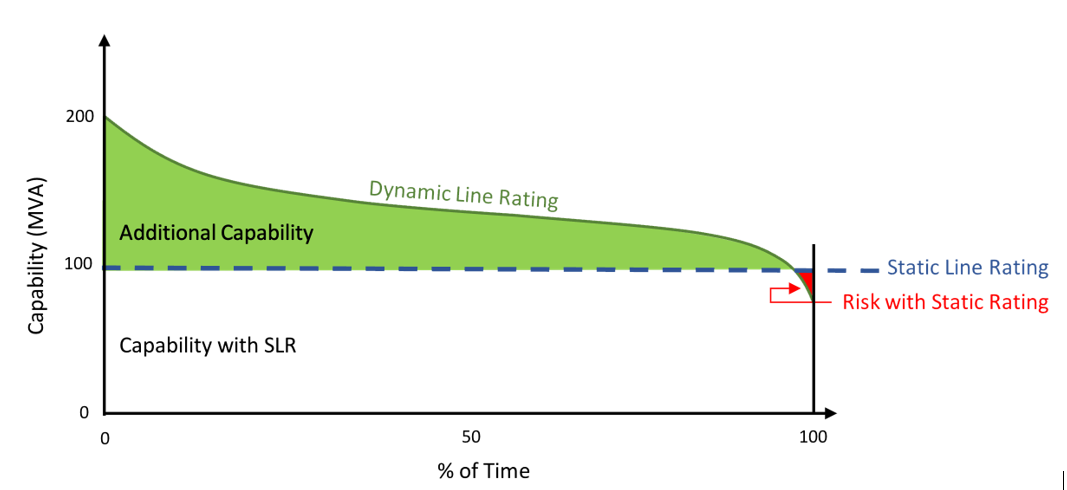FERC 881 - Managing Energy Transmission Line Rating
In recent years, the United States has witnessed a remarkable surge in energy demands driven by population growth, expanding industries, and the relentless advancement of technology. As well as the requirement for new transmission, governing bodies and utilities are employing strategies and technologies to enhance the existing grid capacity while fostering a transition towards a greener, more sustainable energy landscape. In December 2021, the Federal Energy Regulatory Commission (FERC) issued Order No. 881 - a ruling designed to efficiently utilize the existing US transmission grid by advancing the methodologies utilities employ to calculate line ratings.
FERC Order 881
Transmission line ratings represent the maximum capacity that transmission lines, transformers, and other equipment can handle without overheating or exceeding their design limits. The ratings play a pivotal role in ensuring the safe and efficient operation of power transmission systems and the associated calculations are critical in maintaining the reliability and resilience of the power grid, enabling transmission utilities to meet the demands of a rapidly evolving world.

By accurately calculating transmission ratings, engineers can assess the capability of the system to handle the expected load and make informed decisions regarding upgrades or modifications to optimize its performance. FERCs objectives are best summarized by the following three requirements:
- Transmission providers to use ambient- adjusted ratings (AAR’s) as the basis for evaluation for transmission service requests that will end within 10 days of the request.
- Transmission providers to use seasonal line ratings as the basis for evaluation of transmission service requests ending more than 10 days from the date of the request.
- Regional transmission organizations (RTOs) and independent systems operators (ISOs) to establish and maintain the systems and procedures necessary to afford transmission owners (TOs) the ability to use dynamic line ratings (DLRs), should they wish to do so.
What you Need to Know
As compliance filings were required before July 2022, we are now almost a year into the three-year implementation period of FERC 881. Transmission owners should be well familiar with the order and review processes should have been conducted to inform the changes required to achieve compliance with the mandated policies. It is crucial for transmission providers, transmission owners, and RTO/ISOs to be either revising existing or implementing new AAR methodologies before the deadline date of July 12, 2025.
Ambient Adjusted Ratings (AARs)
Historically, utilities worldwide have relied upon static line ratings over extended periods such as seasons e.g. a summer, winter, and spring/fall rating. The ratings are calculated using worst-case weather scenarios and are fixed across each period. Since temperature assumptions often exceed actual ambient air temperatures (98% of the time by NM Group’s own research), the ratings are conservative in nature and understate the near-term transfer capability of the transmission system. These conservative assumptions create restricted flows, increased congestion on the line, and higher financial costs. Similarly, on the occasions where ambient air temperatures exceed static temperature assumptions, transmission line ratings may overstate the capability of the system potentially causing damage to conductors/systems as well as infringing on safety and clearance violations. FERC defines AARs as a transmission line rating that:
applies in increments of one hour or less; reflects up-to-date temperature forecasting during the applicable period; accounts for the lack of solar heating during nighttime periods (if local sunrise and sunset times are updated at least monthly); and is recalculated at least each hour.
The chart below illustrates the advantages of using AARs when compared to static ratings. AARs will factor changes in temperature at regular intervals and in this example enable up to 20% more ampacity to be put through the line when compared to the fixed static rating. Note however that the reduction in wind has no effect on the AARs.

While the specificity of using AARs undoubtedly offers financial incentive, consideration must be given to operational risks. Any increased capacity on a transmission line has a positive correlation with both the probability and consequence of failure as utilities operate closer to their safety margin. The potential for periods where AAR’s are overly optimistic as a result of factors such as regionally assumed wind speed models mean that margins must still be built into TO’s ratings methodologies.
Ambient-adjusted ratings (AARs) improve on the conservative nature of static or seasonal line ratings by factoring in actual ambient temperatures and solar heating to allow more power to move through electric lines. This is particularly significant in terms of factoring in the variance and impact of solar heating across daytime and night-time hours which are typically not differentiated under a static rating system.
Weather Forecasting
Under FERC 881 guidelines, TO’s will be required to forecast ambient air temperature 10 days ahead (240 hours) on an hourly basis. Each unique rating needs to be updated and refined each hour, with each updated rating aggregating with the previous records. An important consideration of this cumulative requirement is the sheer volume of data that needs to be handled and some utilities can expect to be computing billions of unique ratings each year. Any transmission service requests beyond the 240-hour window will be based on assumptions consistent with at least four seasonal line ratings.
AARs in PLS-CADD
One of the most effective and perhaps simplest methods of calculating AAR ratings and obtaining FERC 881 compliance is by using a line design program such as PLS-CADD. By using up to date models (obtained using aerial LiDAR) of the network, engineers can find the maximum conductor temperature a line can be operated at before a limiting clearance issue is identified. Thermal rating report functions will simulate conditions and continuously increase wire temperature until each span reaches its operating limit. The lowest unique span temperature will then inform the thermal rating of the line and the max operating temperature will be converted into an electrical current using IEEE 738 methods. This method can be used to generate longer term SLRs (beyond 10 days) and can be extrapolated further using forecasted ambient air temperatures to generate short term AARs.

Dynamic Line Ratings (DLRs)
Dynamic line rating (DLR) takes the principles of AARs one step further and describes a power transmission operation approach aimed at maximizing the load on a transmission line by considering actual real-time data including wind metrics and allowing ampacity to be calculated using historical, current, and predicted weather and load data. FERC defines DLR as a transmission line rating that:
(1) applies to a time period of not greater than one hour; and (2) reflects up-to-date forecasts of inputs such as (but not limited to) ambient air temperature, wind, solar heating intensity, transmission line tension, or transmission line sag.
While temperature and solar flux (the two variables considered to calculate AARs) are important variables, their impact on line ratings is modest (5-20% change against seasonal ratings). The cooling effects associated with wind speed and wind direction have a considerably larger effect on the temperature of a conductor and can therefore provide substantially/significantly larger changes to the rating of a line.
Ambient weather conditions can be combined with third party weather data to supply both real time (hour ahead) ambient-adjusted electrical ratings and forecasted electrical ratings.
In addition, we have developed a dynamic rating system that operates standalone or as an integrated add on to our Caydence product.
Emerging systems can take real time weather feeds from either publicly available sources or dedicated weather stations and runs a series of computations in real time to give live ratings. The real time ratings can then be displayed within a control room or exposed as an API for direct connection to the utility EMS.The advantage this system provides is that it operates in real time, can take weather feeds directly from the most critical spans and, given the conductor core temperature is continually calculated, the system can provide short term transient ratings and times. This temporary overload takes into account the thermal inertia of the conductor system and to avoid overloading substation equipment can be configured with hard constraints.
In addition to overcoming challenges with the power system protection and potential loss of discrimination further additional rules can be easily incorporated that allow the end user to modify the ratings in line with system configuration.

Use of DLRs enables a significant amount of additional transmission capacity (as much as 100%), as well as eliminates the risk caused by static line ratings where weather assumptions overstate the capability of the system.
In addition to providing utilities with maximum capacity and efficiency, the use of DLRs provide a greater awareness into the performance of a line over time. Studies by PJM Interconnection have demonstrated that a $500,000 DLR solution on the 22-mile Cook-to-Olive transmission line between Michigan and Illinois could provide annual cost savings of more than $4 million compared to costs up to $176 million for traditional system upgrades which would alleviate the same amount of congestion.
Despite the advantages, the use of DLRs carries several considerations that TOs must evaluate. Limitations can arise as a result of increased levels of data acquisition, perception analysis and engineering practice. DLR implementation requires a costly and complex system of line sensors and communication systems which are otherwise absent in static and ambient-adjusted ratings systems.
Looking Ahead...
Perhaps then the most strategic approach is to employ a combination of AAR and DLR methodologies – decisions about where each is appropriate will be unique to every utility and TOs should be specific in how technologies are deployed. One approach may be to implement DLRs on lines that are heavily loaded and are approaching their static rating or on lines that during the planning processes are expected to be exposed to more load growth over time. One thing for certain is that the transition to AAR and DLR methodologies must be approached in a way that avoids the overloading of conductors beyond safe operating limits during infrequent periods when static emergency ratings create risk.
Without sacrificing reliability and security, TOs need to increase their awareness of their network and take a proactive approach in how they maximize the capacity. Whilst DLR implementation has not been mandated in Rule 881, on February 17, 2022, FERC opened a formal Notice of Inquiry to further explore DLR implementation, including potential timeframes for future requirement.
Talk to NM Group today about how to incorporate an ambient-adjusted and dynamic line-rated program, that maximizes network efficiency, regulation compliance, and cost savings while minimizing operating reliability risk.